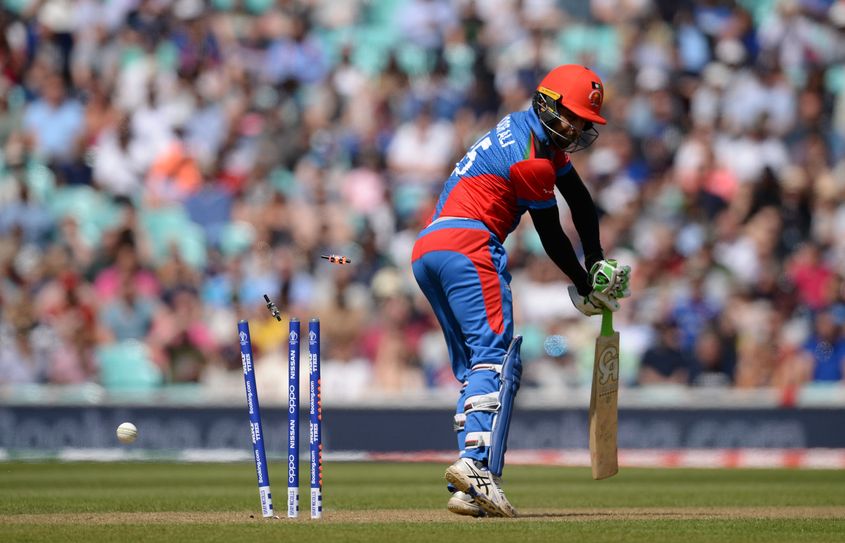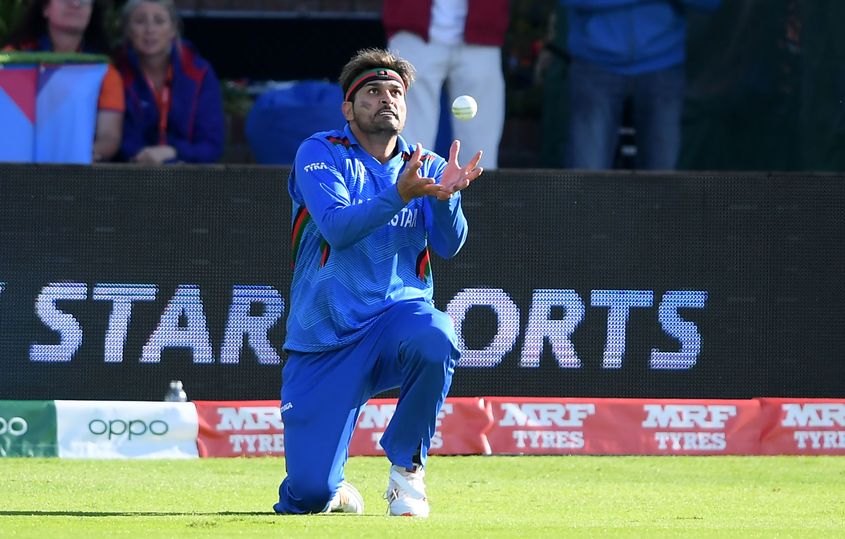When Afghanistan stormed home to steal a World Cup qualification place last year in Zimbabwe, many felt that their talented, if a little enigmatic team could upset some of the World’s best in England and Wales. All while bemoaning the new format and number of teams this May, June and July, the impression was that Afghanistan had matured into an international team ready to play at a high level, with enough quality to stretch across the eleven men picked.
Fast forward to February and the cracks behind the scenes opened up in front of the public. Shafiqullah Stanikzai, CEO of the Afghanistan Cricket Board since August 2014, was ousted with no official reason given. A month later and under the newly-appointed Asadullah Khan, Asghar Afghan, who had patriotically changed his name in “honour of protecting the national identity of Afghan citizens”, was also stood down as captain in all three formats. Teammates who directly benefited from the captaincy changes publicly condemned the decision.
Asghar took the reins from Mohammad Nabi in April 2015, leading his country on their continued upward trajectory and into ICC Full Membership. Winning 31 ODIs, 37 of 46 T20Is and delivering the country their first Test win, one has to ask how political the back rooms of Afghan cricket are for such sweeping changes so close to a major tournament. With a golden opportunity to make a statement in unsettling the cricket hegemony, and with a team that looked balanced and prepared to deliver, the ACB shot themselves in the foot. Shafiqullah as CEO met his targets well inside his deadlines, with meeting ICC requirements for Full Membership seven years earlier than targeted being his proudest achievement.
Afghanistan’s off-field issues led to a shaky foundation for their on-field World Cup performance, continued with Asghar’s replacement. Gulbadin Naib was a curious option, with his performance and conduct at the tournament doing nothing to silence the doubters. Bringing nothing to undo international players with the ball and averaging less than 25 in List A cricket with the bat, critics felt before his appointment that he may be one to face the chop. At times, he looks unprepared in handling the extra responsibilities in front of the media, and even acknowledged Asghar as being “his captain”. Game plans look to be reactive on the field, with the batting lacking direction. Hazratullah Zazai swinging at everything looks a little too late-1990s pinch-hitting for modern One Day International cricket, but it appears to be the only set plan with bat in hand. Collapses have become a habit, started by a slump from 34-0 to 57-5 chasing a modest 181 against perhaps the worst bowling attack in the competition in Sri Lanka. A lack of maturity and leadership is clear for the cricket world to see.
Asghar’s absence has left a void in responsibility during the middle overs, with no one putting their hand up to take over. In the rain-affected chase, Afghanistan were begging for a mature Asghar Afghan innings to steer them home. Had he been at the helm, Afghanistan’s issues of the team may have been remedied with a dose of success. Instead, the dominoes fell and the spiral continued. From 66-0 to being skittled for 172 by New Zealand to a similar collapse against South Africa, only Rashid Khan’s flurrying 35 in the latter effort made things look a little more respectable. It’s a concern that Rashid, who was undone and concussed by a vicious Locky Ferguson short ball the match before, looks to be Afghanistan’s saving grace with the bat. Naib himself in the South African collapse slid himself further down the order, like that of Pakistan’s Sarfaraz Ahmed who was condemned of doing the same on their tour of South Africa. Forcing others to do your job speaks volumes of heart, and Naib has done little to flatter himself.
Wicketkeeper Ikram Ali Khil, who brings little with the bat, was one player sent out by Naib before him against South Africa. Raced over to replace Mohammad Shahzad, it has been Shahzad’s banishment from the squad that has stolen headlines. Underlining Afghanistan’s backroom shuffles, Shahzad claims that his absence was not part of a forced change but that of a political one. Announced as injured, Shahzad hit back, claiming he was fine to take his spot. The ACB continued the to and fro with their version of accounts, stating that the wicket keeper refused to partake in a fitness test, before throwing down a challenge to prove his fitness. Though, if the Afghan setup was so concerned about his obvious lack of fitness, why did they not have Ikram on standby in the first place? Was this a plan to make a contrived move look forced?

With Shahzad gone, Najibullah Zadran’s omission from the eleven becomes more curious. Often coming to Afghanistan’s rescue and with runs on the board in the early stages of the tournament, his late-innings counter-attacking would be no worse than their current efforts. Though, Afghanistan’s selection issues go deeper when even the selectors are being shuffled. Merely days ago and in the middle of their campaign, former Afghanistan head coach Andy Moles along Mujahed Zadran were announced as new members of ACB selection committee with Chief Selector, Dawlat Ahmadzai moved to junior selection committee. Attempting to hide the shuffling during a busy period on the field, the moves were condemned by Afghan fans on social media, not fooled by the smoke and mirrors.
The disjointed off-field approach stems from the administration for the Blue Tigers, with decision-making based on clear favouritism. Noor Ali Zadran’s selection was lambasted by critics, and Hamid Hassan, after a three-year absence through injury and form, was remarkably thrown a lifeline to play in Afghanistan’s biggest ever tournament campaign. Despite glimpses of the Hamid of old, the 31-year-old looks off the pace and lacking in preparation. Raced back into the side and retiring at the tournament’s end, it’s almost a little unfair to look at England and Wales 2019 in an assessment of his playing career. For all we know, he could be as surprised of his reinstatement as anyone, especially after taking up the commentator’s microphone earlier this year during Afghanistan’s Dehradun matches against Ireland. Mujeeb Ur Rahman has failed to fool anyone so far, with a lack of firepower among the quicks to unnerve and compliment any Rashid Khan pressure.

These selections of old bodies, combined with a lack of harmony and direction, that has boiled over into an amateur fielding effort. Sloppy would be generous in their effort against South Africa. Slipping and sliding around in Cardiff, the team in the field looked like all the amateur outfits playing on that soggy Saturday. Crowds have been unrelenting, acknowledging that a now-Full Member should be performing at a higher standard in a roundabout way.
At the helm as coach Phil Simmons has not escaped the soap opera. Leaving his post after the World Cup, the former West Indian was forced to deny rumours of his re-signing, with ACB Chairman Azizullah Fazli telling BBC Pashto of his apparent commitment going forward. Frustrated by “fake news” among the other issues and probably relieved to vacate the role, Simmons also addressed Asghar Afghan’s sacking by stating that he was unaware of the plans to remove him from the role. No international team, let alone one with the underdog status of Afghanistan, could operate with any success with such little transparency.
For the emerging cricket union, Afghanistan shaking up the tournament with positive results looked a good bet a few months ago, though the actions off the field have hamstrung them to a level of mediocrity on the field. For the likes of Scotland, Ireland and the Netherlands, there is perhaps a hint of frustration knowing that Afghanistan have blown the opportunity that they would have seized. For the Afghans who have gone years backwards in 2019, pieces need to be rejigged behind the scenes to progress between the 22 yards.







